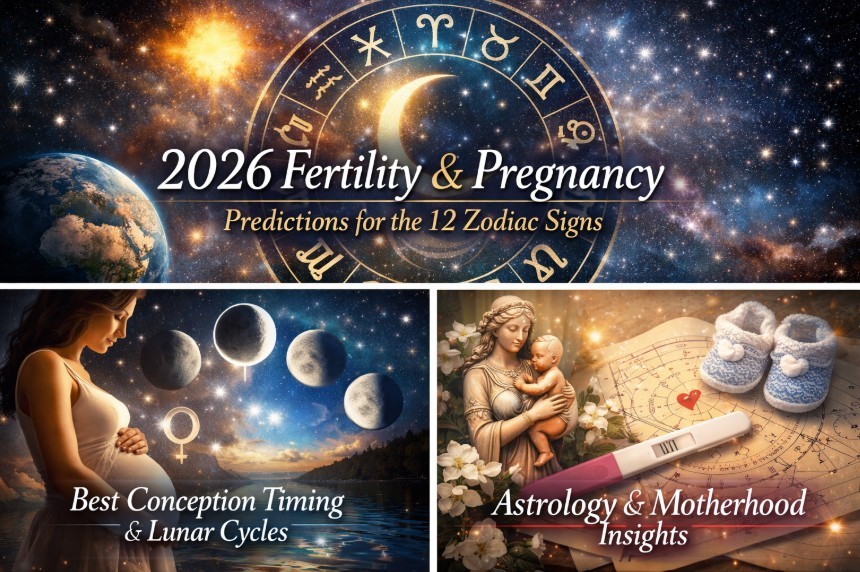How to Boost Website Traffic with ChatGPT: A 2025 Deep Strategy Guide
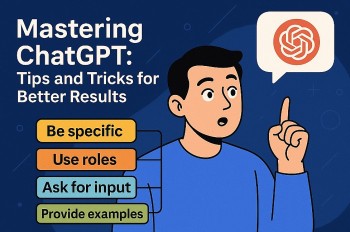 Mastering ChatGPT: Tips and Tricks for Better Results Mastering ChatGPT: Tips and Tricks for Better Results |
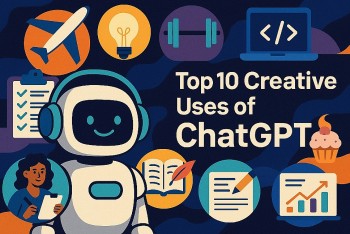 Top 10 Innovative Uses of ChatGPT You Haven’t Tried Yet Top 10 Innovative Uses of ChatGPT You Haven’t Tried Yet |
Why ChatGPT Matters for Website Growth
In 2025, content creation and digital engagement have been reshaped by AI—particularly by large language models like ChatGPT. What started as a conversational assistant is now a powerful tool for marketers, writers, and entrepreneurs to boost visibility and attract targeted website traffic.
This in-depth guide unpacks how ChatGPT can help you:
-
Drive consistent, high-quality traffic
-
Create scalable, SEO-optimized content
-
Engage visitors across platforms
-
Reduce content production time and costs
-
Improve content ideation, structure, and topical authority
Let’s dive into specific strategies, backed by real use cases, workflows, and tools to help you leverage ChatGPT for sustainable traffic growth.
Learn more: The Best Ways to Get More Referral Traffic from AI Search
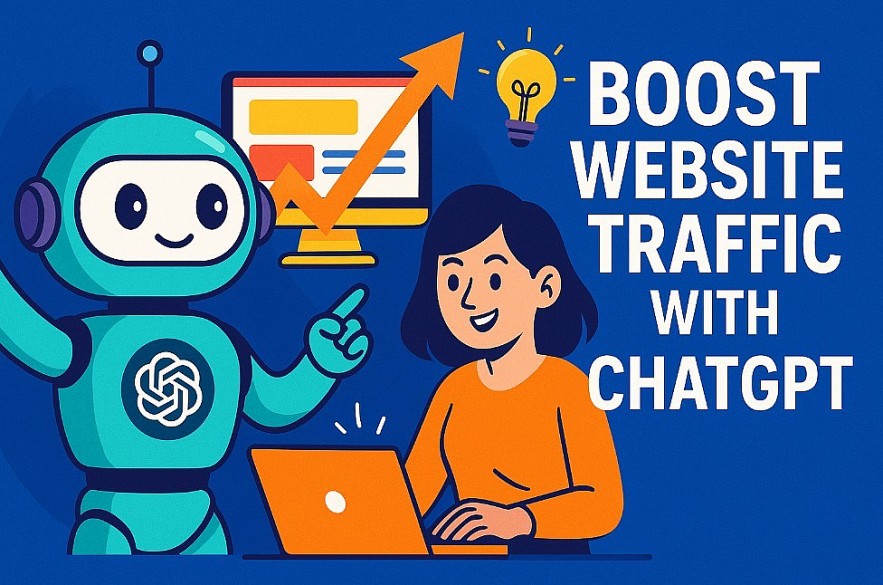 |
| How to use ChatGPT to grow blog traffic |
1. Discover High-Impact Keywords and Trending Topics
Keyword research remains the cornerstone of organic traffic. But traditional tools can be time-consuming and overwhelming. ChatGPT accelerates discovery by transforming vague ideas into structured keyword strategies.
How to Use It:
-
Ask for keyword groupings by intent (informational, commercial, navigational)
-
Request emerging search trends based on a niche or industry
-
Generate long-tail keywords that reflect how real users ask questions
Example Prompt: “List 15 long-tail keywords for a fitness blog targeting women over 40, grouped by search intent.”
Once ChatGPT outputs initial results, you can plug them into keyword tools (e.g., Ahrefs, Semrush) to validate volume and competition. This hybrid approach improves precision and efficiency.
2. Generate SEO-Optimized Blog Content Efficiently
Gone are the days of blank-page paralysis. ChatGPT enables creators to move from idea to draft in minutes.
Effective Workflow:
-
Ask ChatGPT to draft an outline based on your target keyword.
-
Expand each section with targeted prompts (e.g., “Expand H2 about on-page SEO with examples”).
-
Generate meta descriptions, SEO-friendly titles, and internal link suggestions.
-
Human-edit the draft to add unique insights, tone, and brand-specific data.
Bonus:
Add custom instructions like tone of voice, word count per section, or target persona to tailor the content.
Example Prompt: “Write a 120-word intro for a blog post on the best email marketing tools, using a friendly and informative tone for SaaS founders.”
3. Produce Content at Scale Across Platforms
A single blog post can become 5–7 assets if you repurpose it well. ChatGPT lets you transform long-form content into:
-
LinkedIn threads or X (Twitter) posts
-
Email newsletter snippets
-
YouTube video or podcast scripts
-
Pinterest infographics (via bullet summarization)
Workflow Example:
-
Feed a full blog post to ChatGPT.
-
Ask: “Summarize this into a 5-tweet thread highlighting key insights.”
-
Follow up: “Rewrite this in a conversational tone for Instagram captions.”
This multiplies discoverability across platforms, driving referral and branded search traffic.
4. Optimize for Snippets, Voice, and AI Search
Winning position zero is key for driving traffic from both search engines and AI tools like Perplexity or ChatGPT browsing.
ChatGPT Can Help:
-
Format “What is…” questions into <60-word snippets
-
Rewrite content to be conversational for voice and assistant search
-
Add comparison tables, bullet lists, and short answer blocks
Prompt Example: “Summarize the benefits of a standing desk in 50 words for a featured snippet.”
Pair the output with FAQ, HowTo, and Speakable Schema for maximum visibility.
Learn more: How to Boost Website Traffic with AI: The Ultimate 2025 Playbook
5. Improve Content Quality and Readability
ChatGPT is like an on-demand editor. It identifies and fixes content issues such as wordiness, lack of clarity, and weak transitions.
How to Use It:
-
“Simplify this paragraph for a 10th-grade reading level.”
-
“Make this intro more engaging with a question and a stat.”
-
“Rewrite this sentence to improve flow and clarity.”
Readable content improves time-on-site, reduces bounce rates, and is more likely to be shared or linked to.
Pro Tip: Combine ChatGPT with Hemingway Editor or Grammarly to fine-tune tone and grammar.
6. Build FAQs and Glossaries to Capture Intent
AI models and search engines reward content that clearly addresses user intent. FAQs and glossaries do just that.
Use ChatGPT To:
-
Identify real questions from Reddit, Quora, or PAA boxes
-
Generate structured answers for 10–20 questions at once
-
Draft keyword-rich glossary definitions
Prompt Example: “Generate 10 FAQs about ‘email automation’ with concise, clear answers.”
These sections serve both SEO and UX. Add FAQ schema markup for extra visibility in Google and generative AI tools.
7. Design High-Converting CTAs and Page Copy
A well-crafted CTA turns traffic into leads. ChatGPT generates strong, conversion-focused messaging fast.
Use Cases:
-
Headlines for lead magnets, webinar sign-ups, and product demos
-
Multiple CTA versions to test across blog posts and landing pages
-
Microcopy for buttons, banners, or sticky bars
Prompt Example: “Write 5 CTA headlines for a free SEO checklist aimed at small business owners.”
Test and iterate. The more traffic you drive, the more critical these words become.
8. Personalize Content Using Personas and Brand Voice
ChatGPT becomes exponentially more powerful when trained on your voice and buyer personas.
How to Train It:
-
Provide 2–3 articles that reflect your tone
-
Share persona data (goals, pain points, industries)
-
Feed competitive content and ask ChatGPT to match or outperform it
Prompt Example: “Rewrite this paragraph in a humorous, Gen Z tone for a lifestyle brand blog.”
This keeps traffic relevant and improves trust with your ideal audience.
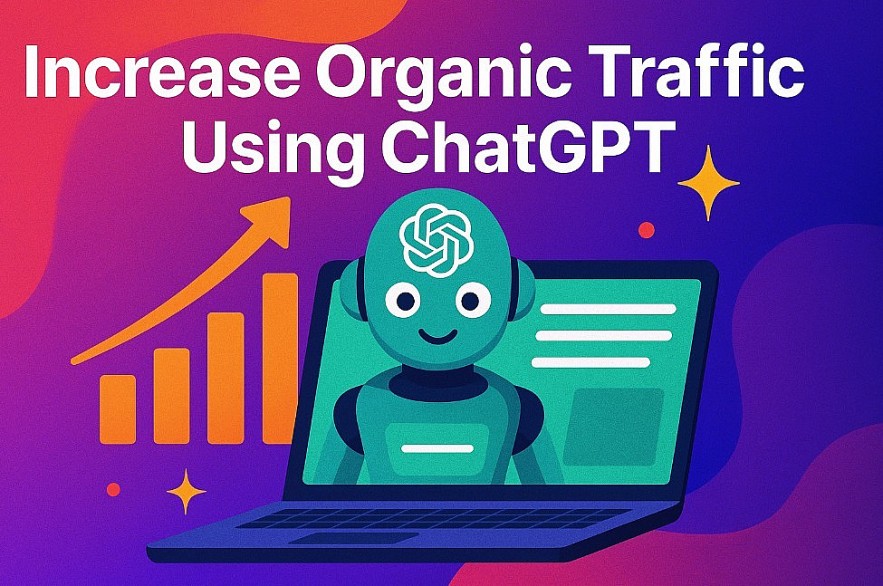 |
| Oganic Traffic From ChatGPT |
9. Integrate ChatGPT Into Your Editorial Workflow
To maximize traffic growth, make ChatGPT a seamless part of your content lifecycle.
Editorial Integration:
-
Use it for keyword brainstorming during planning
-
Outline and draft collaboratively
-
Recycle content for multiple formats
-
Review and optimize before publishing
Tools to Combine:
-
SurferSEO for keyword density and NLP guidance
-
Frase or MarketMuse for topic coverage
-
Trello/Notion to track prompts, drafts, and workflows
This systemized approach enables publishing velocity—one of the most underrated SEO factors in competitive niches.
10. Use ChatGPT for Link Building and Outreach Content
Beyond content creation, ChatGPT can assist in scaling outreach—helping you build high-authority backlinks that directly improve your website's visibility and search rankings.
Outreach Template Generation
Prompts:
-
“Write a personalized cold email pitch for a guest post on a marketing blog.”
-
“Create a backlink outreach message to promote my recent case study.”
-
“Write an intro paragraph to accompany a content share request.”
These prompts generate customizable, conversion-focused outreach copy in seconds.
Guest Post and PR Support
ChatGPT can:
-
Brainstorm unique guest post titles and outlines
-
Rewrite your article pitch for different audiences
-
Draft mini press releases for content launches or updates
Example Use Case:
A B2B startup used ChatGPT to scale outreach emails from 10/day to 50/day with consistent tone and relevance, leading to 20+ new high-DA backlinks in under 60 days.
11. Enhance Engagement Metrics with Better UX Copy
Search engines and AI systems track how long users stay on a page, how far they scroll, and whether they return. ChatGPT can help improve these behavioral metrics by upgrading your UX copy.
UX Copy Use Cases:
-
Revise intro paragraphs to hook readers within 5 seconds
-
Improve subheadings for clarity and structure
-
Suggest calls to read more, download assets, or explore related articles
Prompt:
-
“Rewrite this paragraph to increase user engagement and time on page.”
Improving readability, tone, and relevance boosts user satisfaction—which translates to stronger traffic signals and better ranking potential.
12. Automate Internal Linking and Content Planning
Internal linking is crucial for helping both users and bots navigate your site effectively. ChatGPT can assist by:
-
Generating a suggested internal link map based on existing topics
-
Identifying pages to link together by theme
-
Recommending new articles that fill topic gaps
Prompt:
-
“Suggest internal links for a blog post on AI SEO strategies. Include 5 pages we should connect to.”
Bonus: Use this insight to inform your content calendar by letting ChatGPT generate monthly publishing roadmaps based on SEO and topical clusters.
Final Thoughts: ChatGPT Is More Than a Writer — It’s a Strategic Growth Engine
In today’s AI-accelerated digital world, standing out requires consistency, clarity, and innovation. ChatGPT empowers content teams and solo creators alike to scale their content pipelines, increase authority, and tap into previously unreachable traffic channels.
Whether you use it to brainstorm, draft, optimize, or distribute, ChatGPT can be your most reliable and efficient ally in long-term traffic generation.
It’s not just a tool — it’s your AI-powered growth partner.
Frequently Asked Questions (FAQs)
What is ChatGPT, and how does it help with website traffic?
ChatGPT is an AI language model that assists with content creation, keyword planning, and SEO writing, enabling faster, smarter, and more targeted content that drives organic traffic.
Can ChatGPT replace SEO tools like Semrush or Ahrefs?
No. ChatGPT complements these tools by helping ideate and format content. It doesn’t provide real-time keyword data or competitive analysis.
How do I train ChatGPT to write in my brand voice?
Provide sample content, audience personas, and clear tone instructions. You can use prompt chaining or memory tools (if available) to guide output consistency.
Is ChatGPT content good for SEO?
Yes—if you edit it for originality, relevance, and human tone. It excels at outlines, Q&A, and summaries, which align with Google’s helpful content principles.
How often should I use ChatGPT in my content workflow?
Daily use is ideal—for brainstorming, writing, repurposing, or editing. The more consistent your usage, the faster you scale quality content production.
 How AI Is Rewriting the Rules of Web Traffic - and What You Can Do About It How AI Is Rewriting the Rules of Web Traffic - and What You Can Do About It Organic traffic is declining. Direct visits are rising. Your analytics don’t tell the whole story. AI does. |
 How to Make Content Stand Out in the Age of AI: SEO + Strategy Guide How to Make Content Stand Out in the Age of AI: SEO + Strategy Guide AI-generated content floods the web—but most of it fails. Learn how to rise above the noise with expert content, smart SEO, and human insight. |
 How ChatGPT Is Transforming Productivity at Work How ChatGPT Is Transforming Productivity at Work In an era where efficiency defines success, professionals are turning to tools that help them do more with less. ChatGPT is one of those tools—an ... |
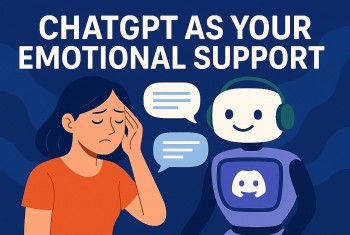 ChatGPT as Your Emotional Support: Exploring AI in Mental Health ChatGPT as Your Emotional Support: Exploring AI in Mental Health Let’s explore the emerging role of ChatGPT in emotional support—and its promises and boundaries. |



